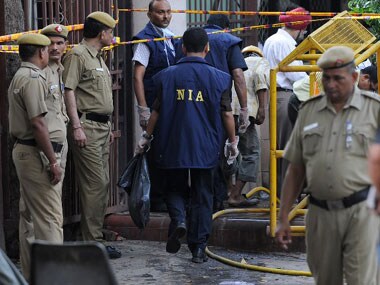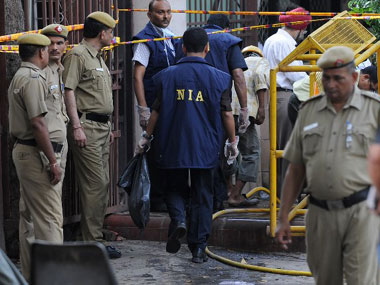Panaji: A trial court has made a stinging indictment of the National Investigation Agency (NIA) accusing it of working overtime to manipulate and “rope in Sanatan Sanstha”, a rightwing Hindu organisation, in a 2009 Diwali-eve IED blast case in Goa. The blast claimed the lives of two Sanatan Sanstha members, who were killed when the improvised explosive device they were ferrying exploded accidentally. [caption id=“attachment_1326833” align=“alignleft” width=“380”]  AFP image[/caption] In his order last week, Goa-based NIA court judge PV Savoikar, while acquitting six Sanatan Sanstha followers, has also picked fist-sized holes in the investigation even raising doubts about the veracity of the First Information Report. Savoikar ruled that seven out of the 12 arguments raised by the NIA failed to pass muster. “Facts stated in FIR appear to be manipulated with intention to rope in Sanatan Sanstha in the offence,” Savoikar said, while acquitting Vinayak Talekar, Vinayak Patil, Vinayak Ashtekar, Dilip Mangainkar, Dhananjay Ashtekar and Prashant Juvekar, saying there was insufficient evidence against them. The six accused, all members of the Hindu rightwing organisation Sanatan Sanstha, and hailing from Maharashtra were accused of attempting to blow up an IED at a Diwali-eve function in Goa in 2009. However, the IED went off prematurely killing two people Malgonda Patil and Yogesh Naik, who were suspected of ferrying it to a Narakasur competition, a popular tradition in Goa, where an effigy of the demon Narakasura is slayed by Krishna on Diwali eve. The Sanatan Sanstha has been opposing the popular practice, which they say ends up glorifying the demon instead of Krishna. The state police probed the sensational case for a few days, before it was handed over to the NIA, which has in the past investigated several cases related to “Hindu Terror”. The NIA investigation lasted for nearly two years, before the trial finally began. The six accused had been charged under Sections 120 B (criminal conspiracy) and 121 A (conspiracy or attempt or abetting to wage war against the government of India) of the Indian Penal Code, Section 16 (Terrorist Act),18 (conspiracy to commit terror act), and 23 (enhanced penalties) of the Unlawful Activities (Prevention) Act, 1967, and Section 3 (causing explosion likely to endanger life or property), 4 (attempt to cause explosion) and 5 (making or possessing explosives under suspicious circumstances) of the Explosive Substances Act, 1908. Barring Naik, all the other accused hail from Maharashtra, who were constant frequenters to the Sanatan Sanstha ashram located in the temple town of Ponda, 30 kms from Panaji. Savoikar in his judgement has said that barring Malgonda and Yogesh, who died in the explosion who were both active members of the Sanatan Sanstha, there was no evidence to suggest that the rest of the accused “were actively involved in any of the activities of Sanatan Sanstha. “None of the witnesses have also stated that the accused had even participated in any protest held by Sanatan Sanstha against the Narakasur competitions or that they had attended any of the meetings in which objections were raised by the Sanstha were discussed with the Collector,” Savoikar’s order reads. The NIA was formed in 2008 and is empowered to deal with terror related crimes across states without special permission from the states. The agency has been in-charge of several high profile investigations into terror cases involving right-wing Hindu outfits. Founded by a hypnotist Dr Jayant Athavale, Sanatan Sanstha was formed in 1990 who claims it is a spiritual organisation. Its members have also been accused of carrying out low intensity blasts in Maharashtra too.
A trial court has made a stinging indictment of the National Investigation Agency (NIA) accusing it of working overtime to manipulate and “rope in Sanatan Sanstha”, a rightwing Hindu organisation, in a 2009 Diwali-eve IED blast case in Goa.
Advertisement
End of Article


)

)
)
)
)
)
)
)
)



